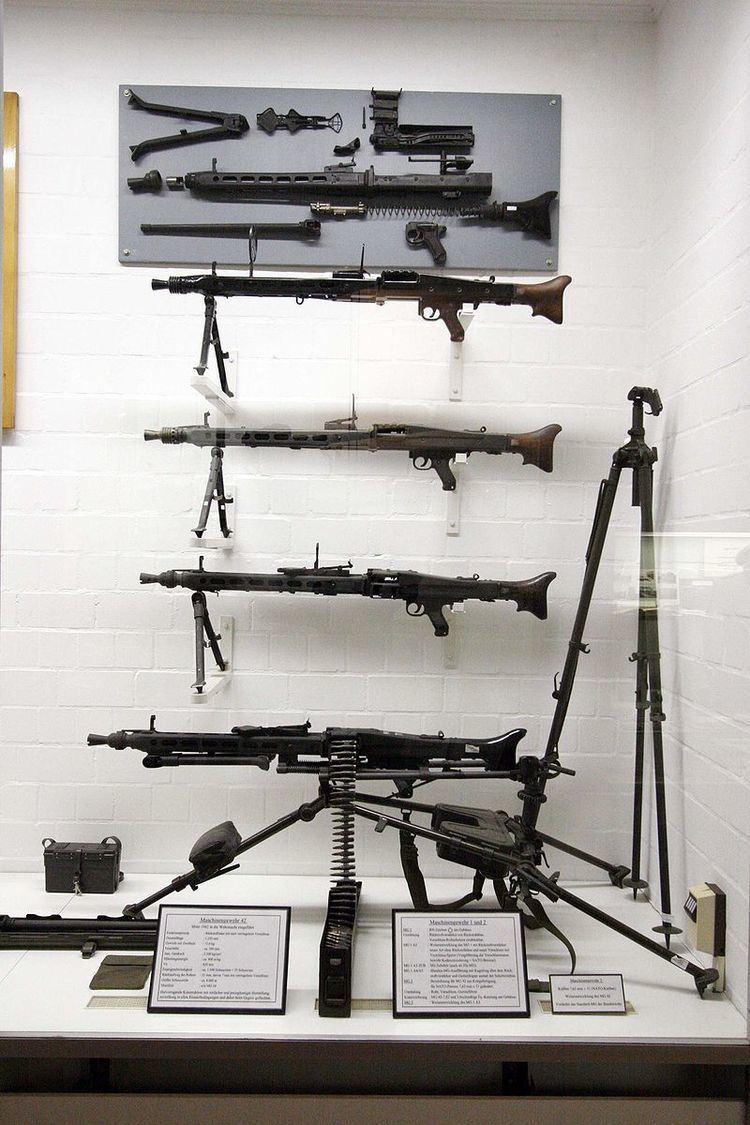 | ||
A general-purpose machine gun (GPMG) is an air-cooled, belt-fed weapon with a quick change barrel that can be used in a variety of roles, from bipod- or tripod-mounted infantry support, to deployment as a helicopter door gun, or a vehicle-mounted support weapon. Modern GPMGs fire full-power rifle cartridges such as the 7.5×54mm French, 7.5×55mm Swiss, 7.62×51mm NATO, 7.62×54mmR, 7.92×57mm Mauser, etc.
Contents
History
"With the MG 34, the German Wehrmacht introduced an entirely new concept in automatic firepower - the Einheitsmaschinengewehr general-purpose machine gun (GPMG). In itself the MG 34 was an excellent weapon: an air-cooled, recoil-operated machine gun that could run through belts of 7.92×57mm Mauser ammunition at a rate of 850 rounds per minute, delivering killing firepower at ranges of more than 1,000 meters. Yet simply by changing its mount, sights and feed mechanism, the operator could radically transform its function. On its standard bipod it was a light machine gun, ideal for infantry assaults; on a tripod it could serve as a sustained-fire medium machine gun; aircraft or vehicular mounts turned it into an air defence weapon; and it also served as the coaxial machine gun on numerous tanks.
During World War II, the MG 34 was superseded (although it remained in combat use) by a new GPMG - the MG 42. The MG 42 was more efficient to manufacture and more robust, and had a blistering 1,200 to 1,500 rounds per minute rate of fire. Nicknamed 'Hitler's buzzsaw' by Allied troops, it was arguably the finest all-round GPMG ever produced, and alongside the MG 34 it inflicted heavy casualties on Allied soldiers on all European and North African fronts. Such were its qualities of firepower and usability that it became the foundation of an entire series of postwar machine guns, including the MG 1 and MG 3 - the latter is still in production and service to this day."
The MG 34 and MG 42 influenced many post-World War II general purpose machine guns, many of which are still in use today. It lent design elements to the Belgian FN MAG and the American M60, while spawning the Zastava M53, Swiss M51, and Austrian MG 74.
